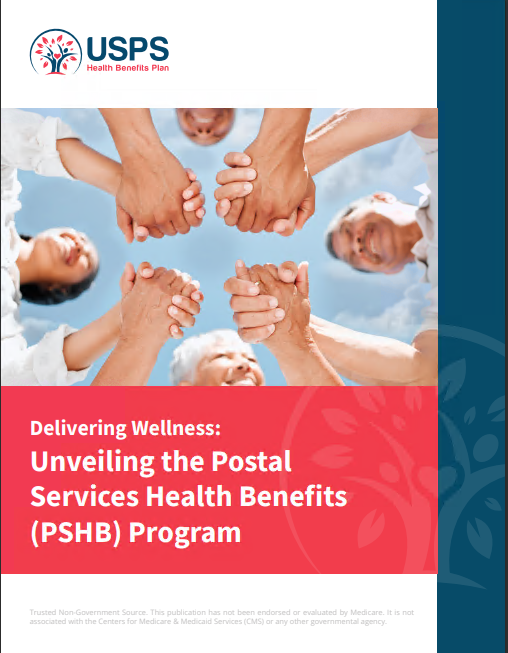Key Takeaways
-
Understanding how deductibles work in your PSHB plan is essential to managing healthcare expenses effectively.
-
Your choice of deductible impacts your monthly premium, out-of-pocket costs, and overall healthcare budgeting.
The Role of Deductibles in Health Insurance Coverage
When it comes to your Postal Service Health Benefits (PSHB) plan, deductibles are a key factor in determining how much you pay for healthcare services before your insurance begins to share the cost. Whether you’re selecting a plan for yourself or your family, understanding the dynamics of deductibles can help you make better financial and healthcare decisions. Let’s dive into what deductibles mean for you and how they shape your overall coverage.
What Are Deductibles?
Deductibles are the fixed amounts you pay out-of-pocket each year before your PSHB plan starts covering services. For example, if your plan’s deductible is $1,500, you’ll need to pay that amount for covered medical expenses before the plan contributes.
Your deductible applies to services like:
-
Doctor visits
-
Hospital stays
-
Certain prescription medications
However, preventive care services are often covered without needing to meet the deductible first, so you can still receive routine check-ups or screenings at no extra cost.
How Deductibles Differ for Individuals and Families
PSHB plans generally offer different deductible structures depending on whether you have individual coverage or a family plan. Here’s how they work:
Individual Deductibles
An individual deductible applies to a single person covered under the plan. Once that person meets their deductible, insurance coverage kicks in for their expenses.
Family Deductibles
Family deductibles, on the other hand, cover all members of a plan. There are usually two types:
-
Embedded Deductibles: Each family member has their own deductible within the family limit. Once an individual’s deductible is met, their costs are covered.
-
Aggregate Deductibles: The entire family’s expenses count toward a single deductible. Coverage starts once the family’s total out-of-pocket expenses reach the limit.
Deductibles vs. Premiums: Finding the Right Balance
The relationship between your deductible and your premium is one of the most important considerations when choosing a PSHB plan. Here’s what you need to know:
-
Lower Deductibles: Plans with lower deductibles generally have higher premiums. These are ideal if you anticipate frequent medical expenses.
-
Higher Deductibles: Plans with higher deductibles often come with lower premiums, making them suitable for healthy individuals or families who rarely visit the doctor.
Your choice should align with your healthcare needs and financial situation. For instance, if you or your family members have chronic conditions or require regular care, a lower deductible plan might save you money in the long run.
What Counts Toward Your Deductible?
Not all medical expenses contribute to your deductible. Knowing what counts can help you track your spending more effectively:
Included in Deductibles
-
Doctor and specialist visits
-
Hospital and emergency care
-
Diagnostic tests (e.g., X-rays, MRIs)
Excluded from Deductibles
-
Monthly premiums
-
Copayments for certain services
-
Non-covered expenses (e.g., cosmetic procedures)
It’s essential to review your PSHB plan’s summary of benefits to understand the specifics.
Out-of-Pocket Maximums: The Safety Net
In addition to deductibles, PSHB plans feature an out-of-pocket maximum. This is the most you’ll have to pay for covered services in a year. Once you hit this limit, your plan pays 100% of your covered costs.
For 2025, the out-of-pocket maximums under PSHB plans are:
-
Self Only plans: $7,500
-
Self Plus One and Self & Family plans: $15,000
Your deductible, copayments, and coinsurance all count toward this limit, offering financial protection against high medical expenses.
Strategies for Managing Deductibles Effectively
Navigating healthcare costs doesn’t have to be overwhelming. Here are some tips to manage your deductibles smartly:
1. Use Preventive Services
Most PSHB plans cover preventive care at no cost to you, even before you meet your deductible. Schedule annual check-ups, screenings, and vaccinations to stay healthy and catch issues early.
2. Budget for Expected Expenses
If you’re on a plan with a high deductible, set aside funds in a Health Savings Account (HSA) or Flexible Spending Account (FSA). These accounts allow you to use pre-tax dollars for eligible healthcare expenses, reducing your overall costs.
3. Monitor Your Spending
Keep track of how much you’ve paid toward your deductible. Most PSHB plans provide online portals or apps where you can review your progress.
Key Considerations During Open Enrollment
Each year, Open Enrollment is your opportunity to evaluate your PSHB plan and make changes. When comparing plans, pay close attention to:
-
Deductible Amounts: Look at how much you’ll need to pay before coverage begins.
-
Premium Costs: Ensure the monthly cost fits your budget.
-
Out-of-Pocket Limits: Check the maximum amount you could pay in a worst-case scenario.
These factors can significantly impact your healthcare costs throughout the year, so take the time to weigh your options carefully.
When Does the Deductible Reset?
PSHB deductibles reset annually on January 1. This means any healthcare expenses you incurred in 2024 no longer count toward your 2025 deductible. Planning ahead can help you avoid surprises when the new year starts.
Why Deductibles Matter for Families and Individuals
Understanding how deductibles work helps you take control of your healthcare costs. By choosing a plan that fits your needs, using preventive services, and budgeting for medical expenses, you can make the most of your PSHB coverage. Whether you’re managing individual health needs or ensuring your family’s well-being, deductibles play a central role in your financial and healthcare planning.
Optimize Your Coverage for 2025
Take charge of your health and finances by understanding how your PSHB deductible affects your coverage. This knowledge empowers you to make informed decisions and ensures you get the most out of your plan.











